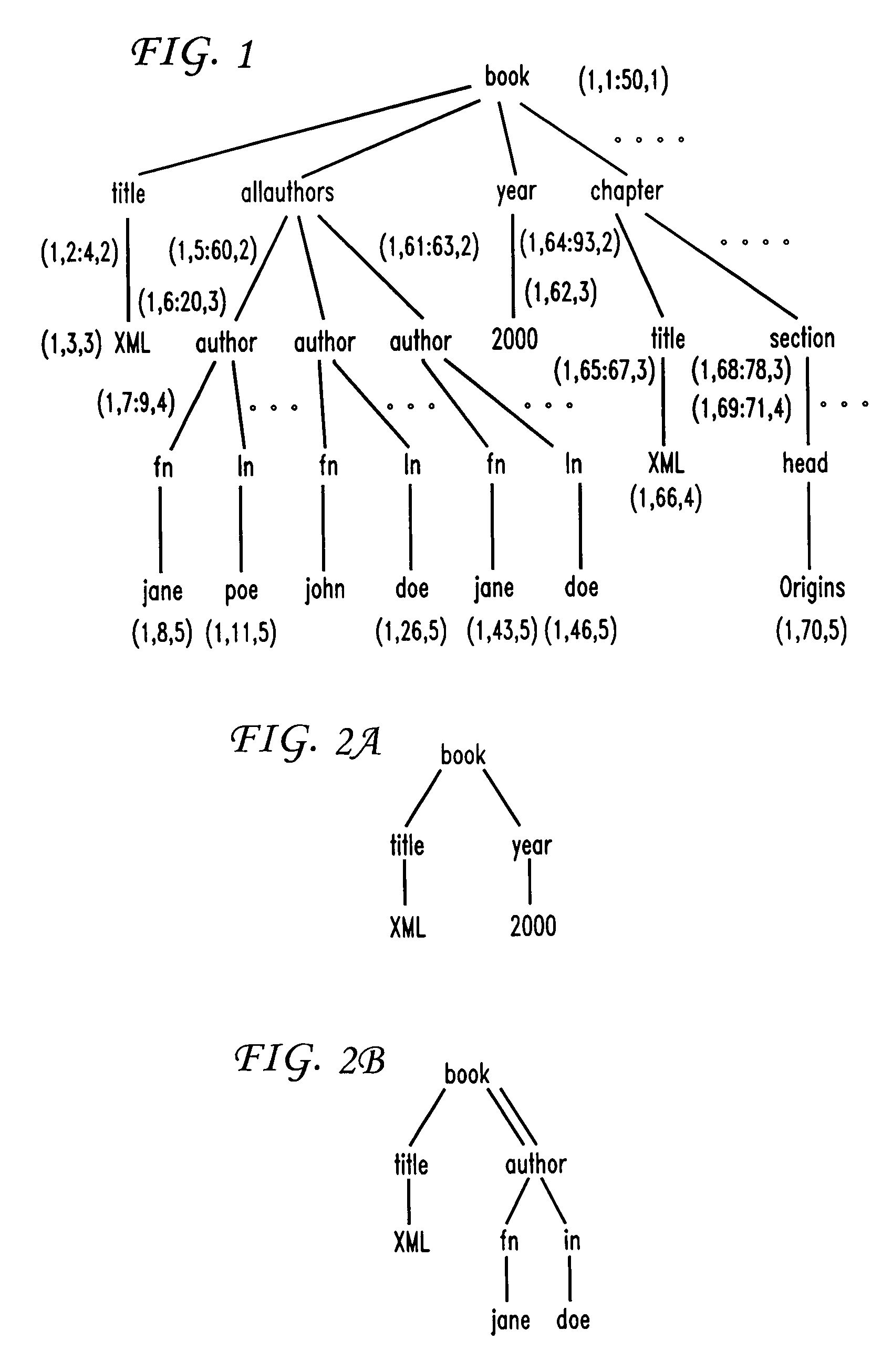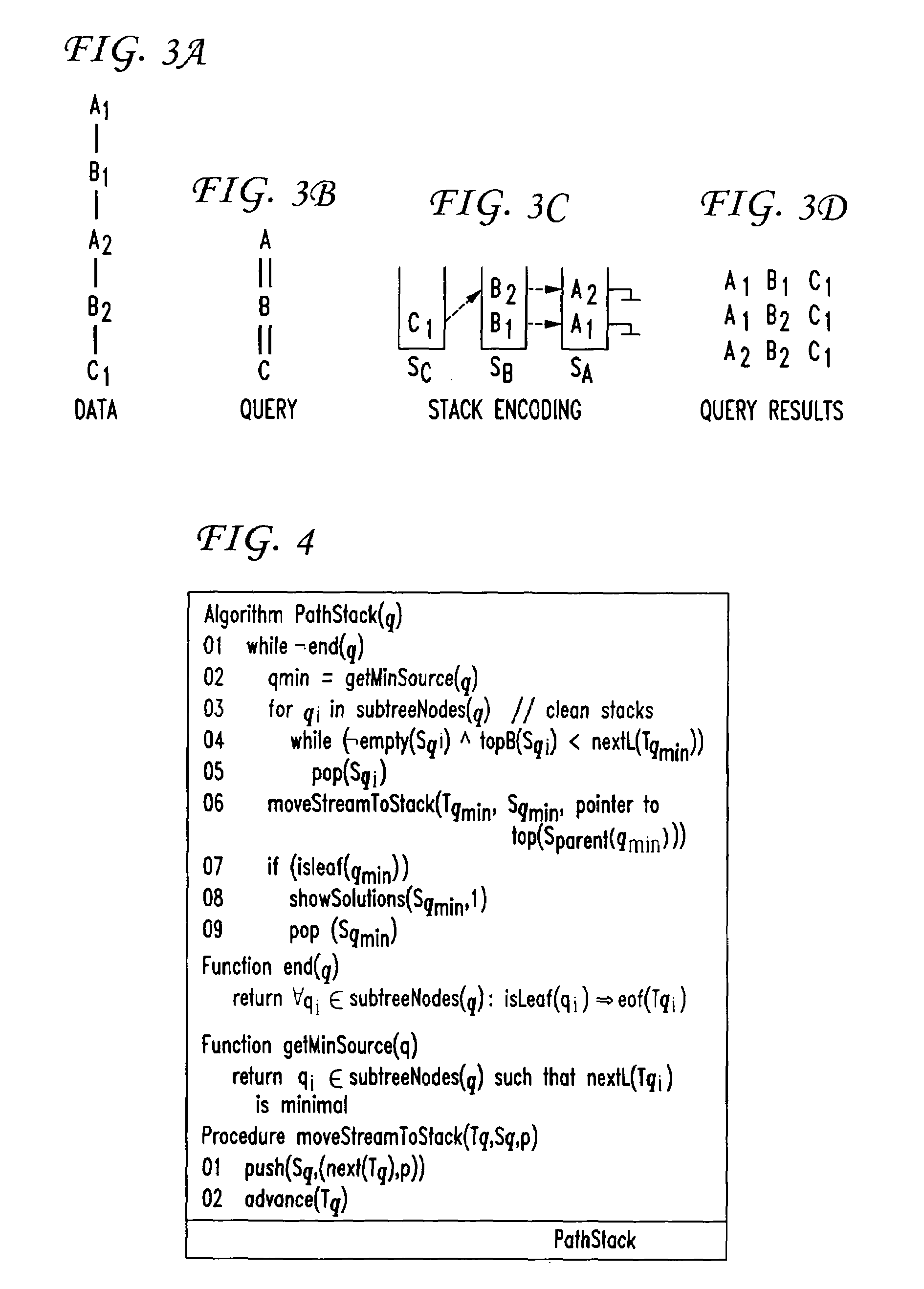Method and system for pattern matching having holistic twig joins
a technology of holistic twig joins and pattern matching, applied in the field of processing computer queries using pattern matching, can solve the problem of large size of intermediate result, and achieve the effect of optimal query pattern matching
- Summary
- Abstract
- Description
- Claims
- Application Information
AI Technical Summary
Benefits of technology
Problems solved by technology
Method used
Image
Examples
example
[0064]Consider the query sub-twig rooted at the author node of the twig pattern in FIG. 2B. Against the XML database in FIG. 1, the two paths of this query: author-fn-jane, and author-ln-doe, have two solutions each, but the query twig pattern has only one solution.
[0065]In general, if the query (root-to-leaf) paths have many solutions that do not contribute to the final answers, using PathStack (as a sub-routine) is suboptimal, in that the over-all computation cost for a twig pattern is proportional not just to the sizes of the input and the final output, but also to the sizes of intermediate results. In one embodiment, this suboptimality is overcome using Algorithm TwigStack.
[0066]Algorithm TwigStack, which computes answers to a query twig pattern, is presented in FIG. 8, for the case when the streams contain nodes from a single XML document. As with Algorithm PathStack, when the streams contain nodes from multiple XML documents, the algorithm is readily extendable to test equalit...
example 2
[0071]Consider again the query of Example 1, which is the sub-twig rooted at the author node of the twig pattern in FIG. 2B, and the XML database tree in FIG. 1. Before Algorithm TwigStack pushes an author node on the stack Sauthor, it ensures this author node has: (i) a descendant fn node in the stream Tfn (which in turn has a descendant jane node in Tjane), and (ii) a descendant ln node in the stream Tln (which in turn has a descendant doe node in Tdoe). Thus, only one of the three author nodes (corresponding to the third author) from the XML data tree in FIG. 1 is pushed on the stacks. Subsequent steps ensure that only one solution to each of the two paths of this query: author-fn-jane, and author-in-doe, is computed. Finally, the merge-join phase computes the desired answer.
[0072]Consider a twig query Q. For each node qεsubtreeNodes(O) one can define the head of q, denoted hq, as the first element in Tq that participates in a solution for the sub-query rooted at q. One can say t...
PUM
 Login to View More
Login to View More Abstract
Description
Claims
Application Information
 Login to View More
Login to View More - R&D
- Intellectual Property
- Life Sciences
- Materials
- Tech Scout
- Unparalleled Data Quality
- Higher Quality Content
- 60% Fewer Hallucinations
Browse by: Latest US Patents, China's latest patents, Technical Efficacy Thesaurus, Application Domain, Technology Topic, Popular Technical Reports.
© 2025 PatSnap. All rights reserved.Legal|Privacy policy|Modern Slavery Act Transparency Statement|Sitemap|About US| Contact US: help@patsnap.com



